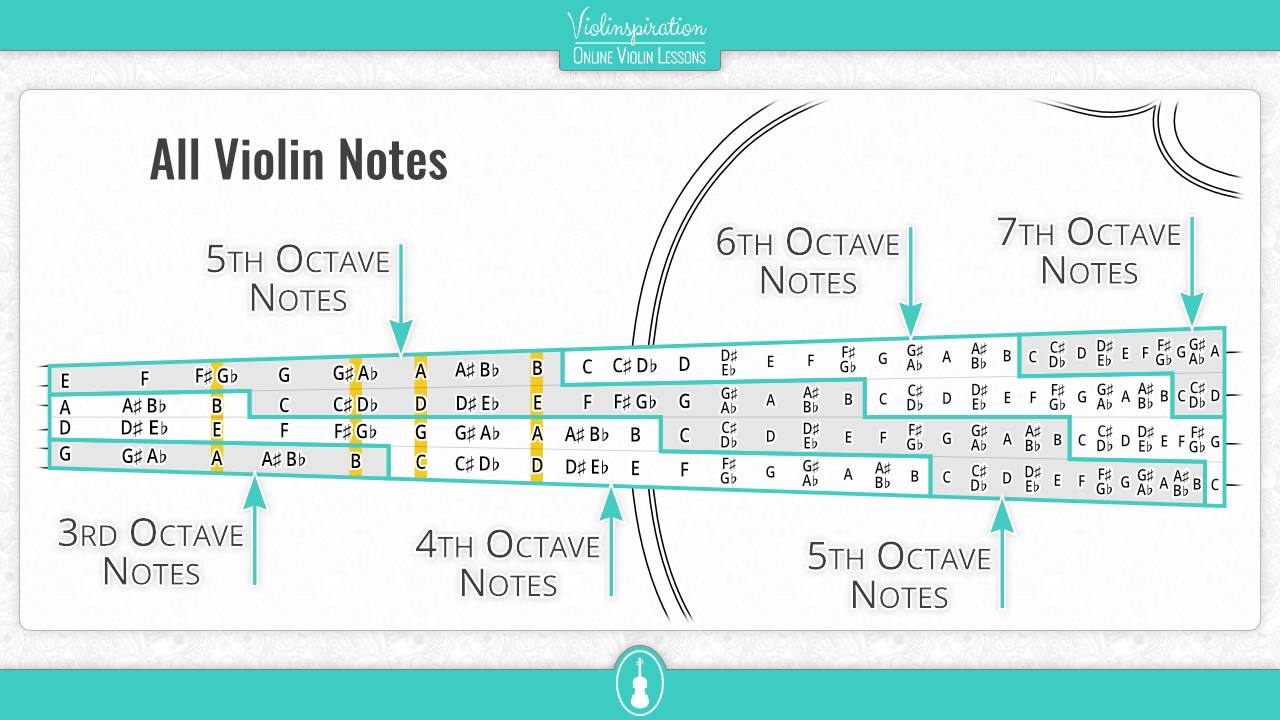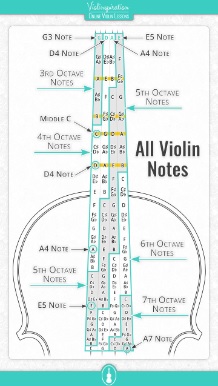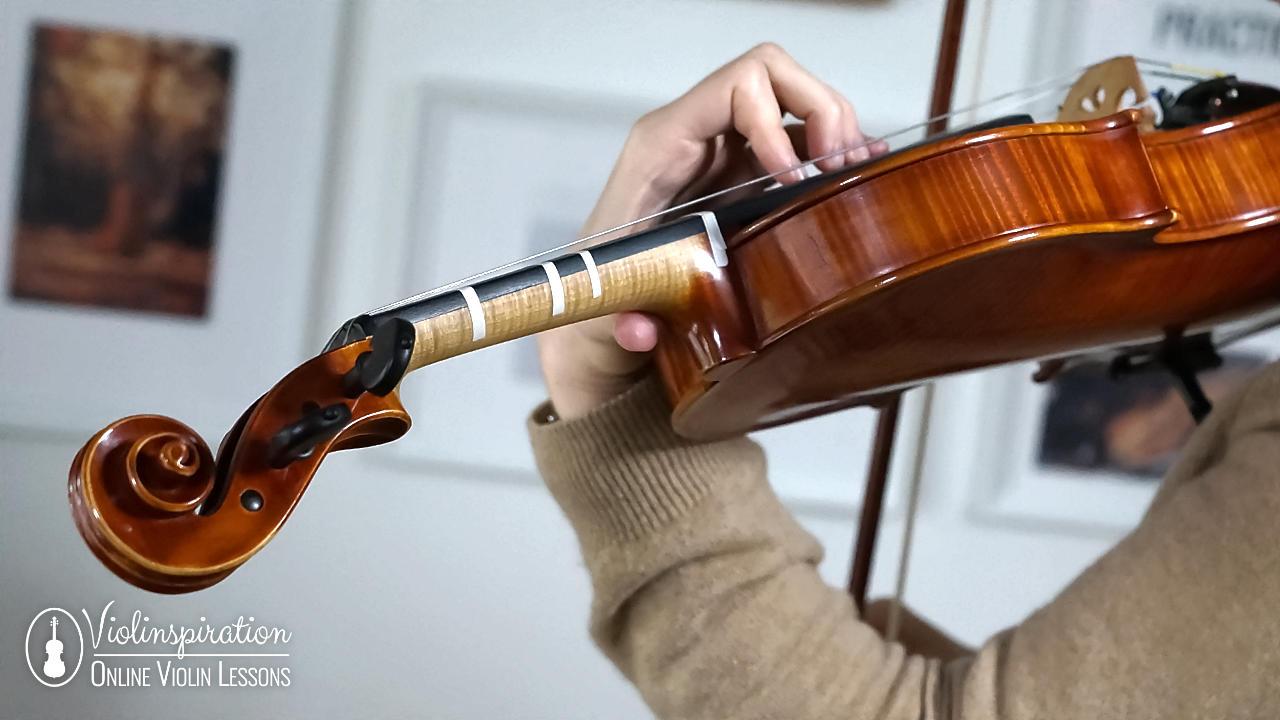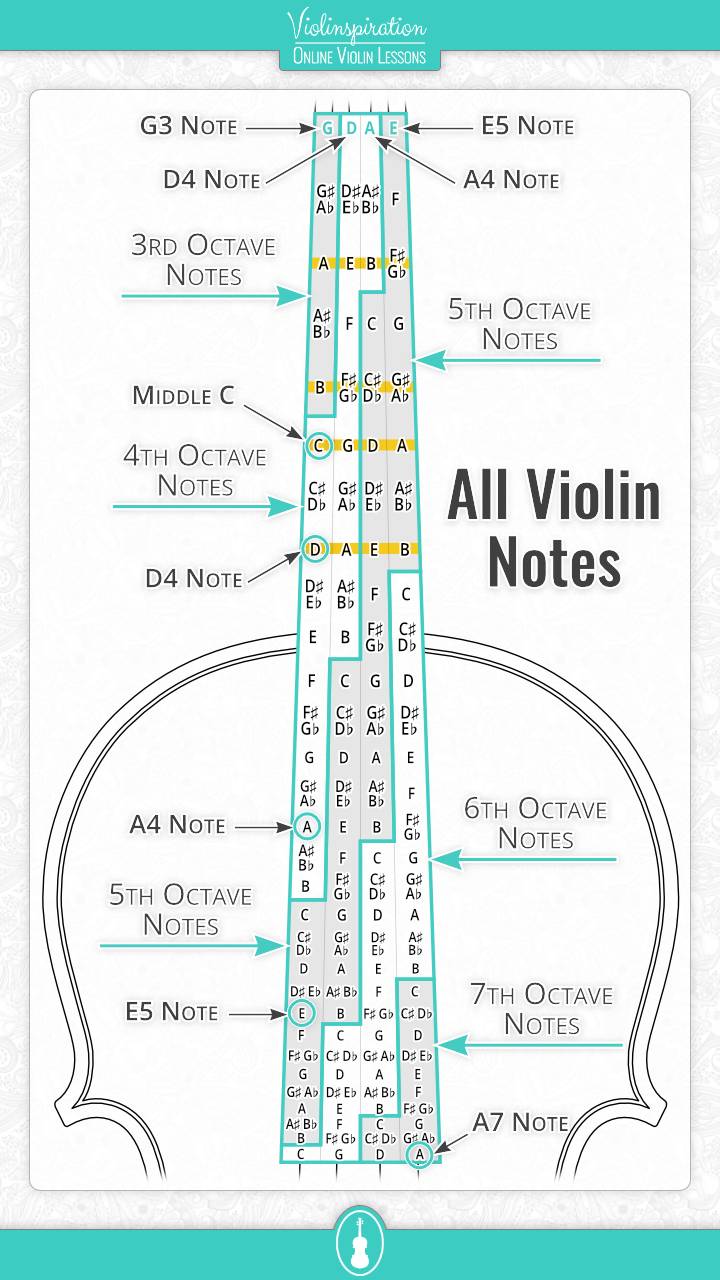“Range” in music, when talking about an instrument’s or a voice’s range, is the distance from the lowest to the highest note. In short, how many notes and at what pitch an instrument can play.
If you think of the string instruments from the violin family as a choir, the violin would be the soprano as it is the highest-pitched instrument among them. Thus, the violin can reach very high notes. So let’s examine the violin’s range!
How High and Low Can a Violin Go?
Do you know the lowest and the highest note that a violin can play?
The Lowest Note on a Violin
The lowest note on the violin is the open G string. This note is called G3 – note G in the third musical octave.
However, the violin can reach lower tones with cross tuning. This means tuning the instrument in a non-standard way, such as detuning the G string a tone lower to reach F3 and on very rare occasions, up to a fourth lower, to reach D3. Also known as scordatura, this technique is most common in folk music.
The Highest Note on a Violin
The highest note on the violin is a slightly more complicated matter. The typical highest note on the violin is considered A7, at the very end of the fingerboard on the E string. However, that’s assuming you have tuned your instrument’s four strings in the standard G – D – A – E way, and the length of your fingerboard is the typical size. Lengths sometimes can vary depending on the manufacturer.
But can you reach even higher? Yes, it’s possible! With artificial harmonics, you can reach up to D8!
A7 is very rarely played, except in very advanced virtuosic repertoire, and practically never in orchestral works. A practical limit of the violin’s range is E7 – that’s the highest limit for most of the violin’s repertoire, especially in orchestras and other ensembles.
Playing in such high registers is not something easy for any beginner or even intermediate student, and the bowing technique is slightly different in order to produce a clear sound – not to mention the fingers have to be so close to each other, so the pitch can easily suffer. For these reasons, a safe limit for student orchestras will be G6.


Download Poster with
All Violin Notes
on the Fingerboard
High-quality poster
How Many Notes Are on a Violin?
Counting from the lowest note, which is G3, up to the highest, which is A7, the violin has 51 notes! That includes semitones (also called half steps), which are the smallest intervals in Western music.
Violin Frequency Range
The violin’s lowest note, G3, is 196 Hz while E7, the highest practical limit of the violin, is 2,637 Hz. A7, the highest actual note, is 3,520 Hz and D8 played using artificial harmonics is 4,698 Hz.

Violin Sound Level Range
Let’s see what the sound level range of the violin is.
At full volume (without any violin mute), the violin sound level can range from about 70–90 dB. That’s loud enough to need some earplugs if you’re playing for more than an hour, but not loud enough that playing with a band will drown your sound. Of course, it can go louder with a proper pick-up, or if you’re using an electric violin.

How to Reach the Highest Note on the Violin
You can reach the highest note on the violin with your fourth finger or with the third finger. It means shifting your left hand to the fourteenth and fifteenth positions respectively.
If you’d like to learn more about finger positions, make sure to check out these articles:
FAQ

How many octaves does a violin have?
The violin has four octaves plus two notes. A3 is the lowest A on the violin, played with the first finger on the G string. A7 is the violin’s limit, so there are four octaves plus G (open string) and G#.
How high can a violin reach?
The violin can reach up to A7 at 3,520 Hz. D8 is possible, but only as an artificial harmonic. Higher pitches can be reached with cross tuning (scordatura), or when using a longer fingerboard.
What is the lowest note possible on a violin?
G3, otherwise known as the open G string, is the lowest note on the violin. It’s the G before the middle C, written under the stave with two ledger lines. However, playing lower than that is possible: with cross tuning, the G string can be lowered to F3 or even D3.

Download Poster with
All Violin Notes
on the Fingerboard
High-quality poster
Can a violin play a G6?
Yes, a violin can play G6. It can be found on the D, A, and E strings. G6 is the highest note possible to play on the D string.
What is a comfortable range for a violin?
A comfortable violin range is from G3 to E7 for orchestral repertoire. For students, the comfortable violin range will end at G6.
To Sum Up
The violin is an instrument with a wide range, but not all of it can be used by every violinist. It depends on the instrument itself as well as the capabilities of the violinist. Great virtuosos can hit the highest notes, up to A7 or even D8 using artificial harmonics, but that’s not the case for orchestra players or violin students. A solo piece might include passages, or there may be a cadenza that goes this high up, but it is not very common.
























